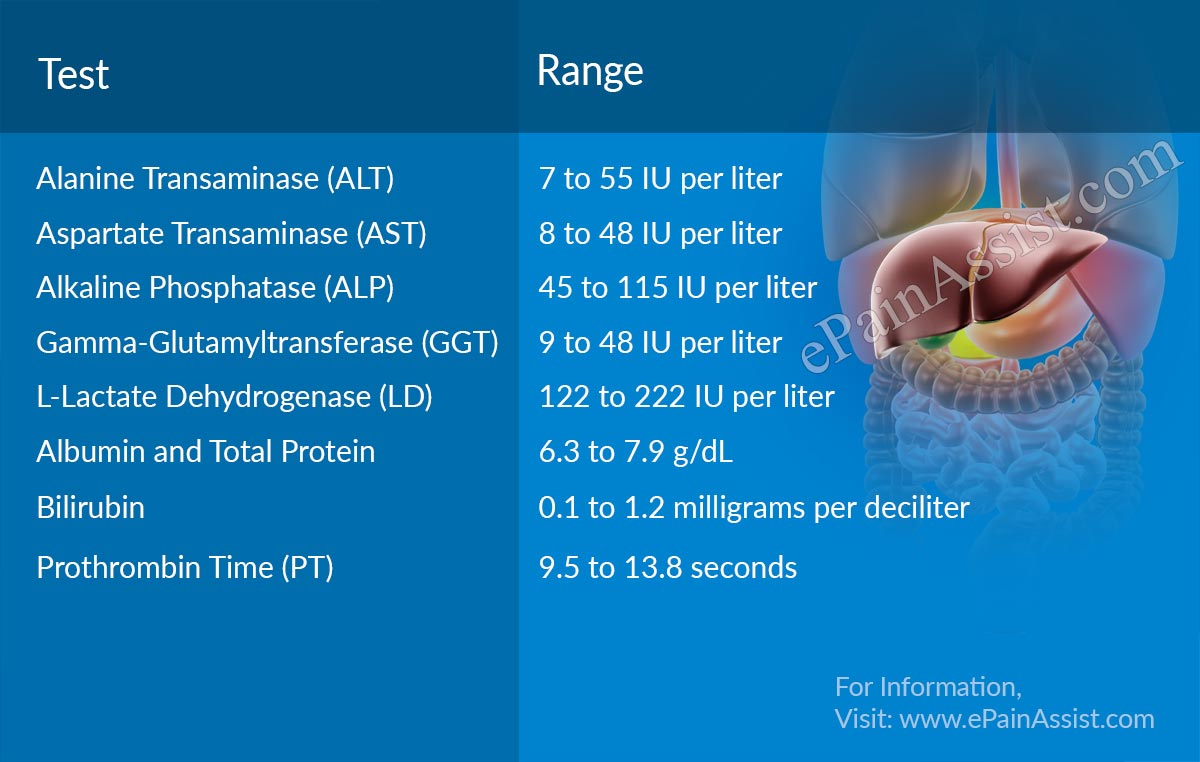What Are The Normal Liver Enzyme Levels?
Liver enzymes are monitored through liver panel or liver function tests (LFTs). A liver panel is done for the screening and diagnosis of a disease/infection, monitoring a disease progression, determining treatment progress, monitoring possible side effects of certain medications and to measure severity of particular diseases. LFTs measure levels of certain proteins and enzymes in the body through a blood test.

Alanine Transaminase (ALT): It is an enzyme that is mainly found in the liver that helps in protein metabolism. The normal levels of ALT are 7 to 55 IU per liter. When the liver is damaged or diseased, ALT is released into bloodstream in increased amounts. The severity of increase of the enzyme determines the diseased state.
Aspartate Transaminase (AST): It is an enzyme that helps in alanine amino acid metabolism and can be found in kidneys, heart, brain and various skeletal muscles of the body along with the liver. Therefore, determining ALT levels for liver function tests is more important than AST levels as ALT is majorly found in the liver. The normal levels of AST in blood are 8 to 48 IU per liter. An increase in AST levels in the blood may indicate liver damage/disease and/or muscle damage.
Alkaline Phosphatase (ALP): It is an enzyme found in the liver, bile ducts and bone. The normal level of ALP in the blood is in the range of 45 to 115 IU per liter. An increase in the level of ALP indicates a liver damage/disease or bone disease.
Gamma-Glutamyltransferase (GGT): It is an enzyme that is found in the liver, kidneys, and pancreas and also in intestines, heart, brain, spleen and seminal vesicles. It is used to determine the cause of elevated ALP. The normal level of GGT in blood ranges from 9 to 48 IU per liter. The increase in GGT indicates bile duct disease as well as liver disease.
L-Lactate Dehydrogenase (LD or LDH): It is an enzyme found in most of the tissues including liver, heart, kidneys, pancreas, muscles, blood cells, and lymph tissues. The normal levels of LDH range from 122 to 222 IU per liter. LDH is elevated in liver damage as well as several other disorders.
Albumin and Total Protein: Albumin is a protein that is made by liver and accounts for about 60% of total protein. It has several functions in the body including binding of water, cations, hormones, fatty acids, bilirubin, T4 and drugs and regulating oncotic pressure of the blood. The normal range of albumin in blood is 3.5 to 5.0 g/dL and total protein in blood is 6.3 to 7.9 g/dL. Decreased albumin or total protein level indicates liver damage/disease.
Bilirubin: It is a byproduct of normal red blood cell breakdown. It is a waste product that is passed through the liver to be excreted in stools. Normal levels of bilirubin are around 0.1 to 1.2 milligrams per deciliter. An increased level of bilirubin in blood indicates jaundice and other liver diseases as well as hemolytic anemia.
Prothrombin Time (PT): It is the time taken by blood to clot. Normal range of PT is 9.5 to 13.8 seconds. Increase in PT might indicate liver damage, but it is also elevated with anticoagulant therapy.
Causes of Elevated Liver Enzymes
The most common causes for elevation of liver enzymes include alcohol abuse, medications such as pain relievers, medications for seizures, antibiotics, and medications to lower cholesterol levels, antidepressant drugs, niacin, and cardiovascular drugs. An overweight or fatty liver may also cause liver enzymes to be elevated. The excess fat in the liver inflames the liver and ultimately leads to cirrhosis of liver. Other common causes include hepatitis A, hepatitis B, hepatitis C, and obesity. Liver enzymes can also be elevated in liver cancer, hypothyroidism, alcoholic hepatitis, CMV infection, heart diseases, pancreatitis, polymyositis, celiac disease, inflammation of gall bladder, and liver cirrhosis.
The normal ranges of LFTs vary from laboratory to laboratory. An increase in liver enzymes does not necessarily mean damage to the liver.
Also Read:
- Elevated Liver Enzyme: What does it mean when your liver function is high?
- What can Cause Liver Enzymes to be Elevated?
- What are the Symptoms of Elevated Liver Enzymes?
- What Happens when your Liver Enzymes are High?
- Are Elevated Liver Enzymes a Sign of Pancreatic Cancer?
- Can Gallbladder Problems cause Elevated Liver Enzymes?
